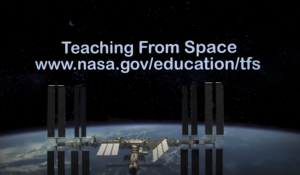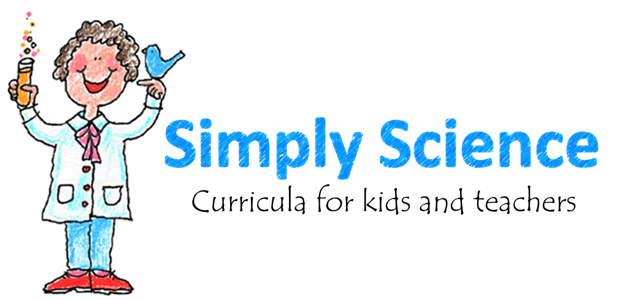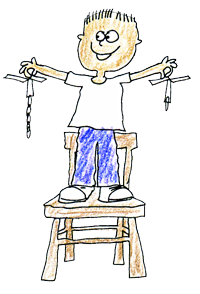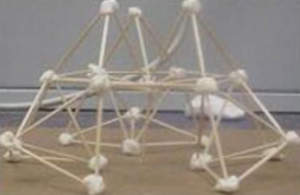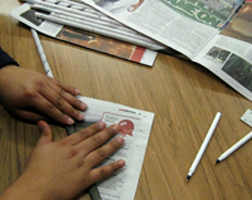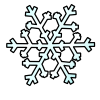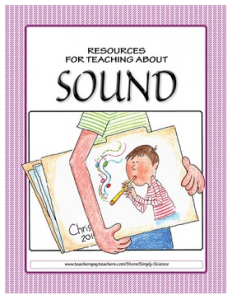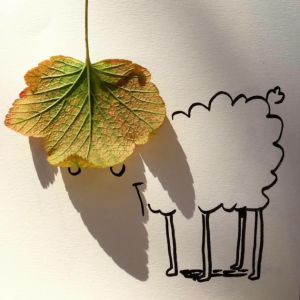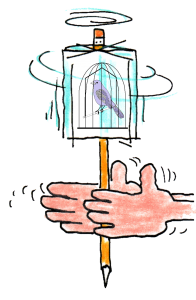Here’s an amazing resource I added to the Newton’s Laws web page – sixteen short videos posted by NASA that you’ll want to show your students. Each video introduces a common toy and demonstrates how it’s used on Earth and then on the International Space Station.
Cut and fold paper to create a helicopter that spins as it’s dropped to the floor. Create a second helicopter but this time change the size or mass of the helicopter. It can be hard to time a helicopter as it drops so consider dropping the two helicopters to determine if the change affects how the helicopter falls to the floor. For more about this activity, check out these resources: eGFI Dream Up the Future or a FREEBIE created by Bryce Hixson. My students enjoy this activity so much I included it in my Pushes and Pulls product at TpT.
Here’s another activity to consider that requires less common materials, raw spaghetti and miniature marshmallows. You’ll want to set aside time if your students love this activity like mine do. Suggested grade level is sixth. Younger students might struggle with being patient and handling small materials. If you have younger students you might use tape instead of marshmallows to create towers. After your students complete their structures consider, if space allows, leaving them out on a shelf. As the marshmallows dry the structures remain intact. Kids love seeing their work displayed in the room! You might view this TED talk to find out why kindergarten students are better at this kind of …
Need a quick activity that requires only newspaper and tape? Maybe an activity for a family science night? www.flickr.com/photos/vinzcha/ / CC BY 2.0 Consider this online resource adapted from PBS that combines science and engineering. It includes a clearly written procedure, vocabulary, background, and suggestions for an assessment. It could be completed by teams of engineer/scientists in your classroom! My students love this activity. The site suggests 20 minutes but my students always ask for more time to try variations they’ve seen other teams attempt. That’s what scientists do right, build on each other’s work?
Learning about snowflakes is an easy way to integrate math, science, and art. It’s been snowing where I live so I decided to publish a new product for TPT: Simply Science, Resources for Teaching about Snowflakes. To thank you for following my blog, I’m sending you the link to the web page that was created just for this product. You’ll find online sites that let kids cut out their own snowflakes and then they can save, email, or download their snowflakes for printing. No scraps of leftover paper! Also, there’s information about the science of snowflakes and suggestions for making large paper …
Resources for Teaching about Sound A great way to add to your physics unit. Let me save you time collecting resources! I’ve created activities and worksheets that you can use to easily enrich your sound unit. Here’s what you get for just $2.40! • Two writing prompts in English and Spanish already placed on worksheets • A glossary of common terms with definitions in both English and Spanish • Five key terms and definitions in a LARGE font – just print and post on your wall • Seek-a-Word puzzles can be a fun way to learn new science terms • …
source: tinyurl.com/shadowillustrations Artist Vincent Bal turns the shadows of everyday objects into ingenious illustrations, Consider adding this resource to your light unit or challenging your students who enjoy drawing to create a few shadow illustrations of their own to share with classmates. This could be an activity for pairs or teams of students. You just need a few common objects and a flashlight! This suggestion came from Ian Byrd. He sends me an email every Friday with resources for gifted students. Most activities would work with the amazing variety of students we have in our classrooms. You might check out Byrdseed: …
Use an optical illusion to extend your light or five senses unit. Print in color or have students color the images. Tape the paper to a pencil or straw, staple, and spin! Step-by-step directions and a short video make it easy to create a spinning illusion your students will love. Kids may want to draw their own illusions to share with classmates and family members. Does it matter if you spin slowly or quickly? What if you use dark colors, bright colors, or pale colors? Will you see the illusion better if you are close, holding it at arm’s length, or far …
Extend your unit on light into a study of optical illusions. Your visual kids will love it and your more capable or interested kids can be challenged to create new illusions. Here are a few resources to make it easy to add optical illusions to your science class. Optics 4 Kids – The Optical Society for great resources – Check out their activities! Easy Activities explore the basic concepts of light and color, suitable for five and older Medium Activities are recommended for scientists ten and older Advanced Activities are suggested for scientists fifteen and older Examples of Optical Illusions from …
Poetry can be a great way to integrate language arts with science! Here are suggestions for connecting science and poetry when your students are studying light, reflection, refraction, shadows, or rainbows! Something Big has Been Here, Jack Prelutsky “Denson Dumm” A Light in the Attic, Shel Silverstein “BATTY” “SHADOW RACE” “SIGNALS” Every Thing On It, Shel Silverstein “THE RAINBOW THROWER” Where the Sidewalk Ends, Shel Silverstein “AFRAID OF THE DARK” “JOEY” “IT’S DARK IN HERE” Do you have poems about light to share with us?
